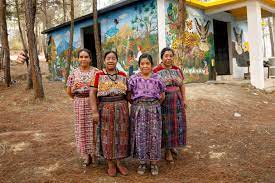
Kunming, China: This week delegates to the long-delayed global biodiversity summit began the opening round of negotiations over a new international framework meant to address the world’s biodiversity crisis. Originally intended to be an in-person event, pandemic concerns and global vaccine inequalities forced the meeting, known as COP15, to be held remotely, and it is now seen as a largely procedural step in advance of a larger face-to-face gathering slated for next spring in Kunming, China.
On the agenda is a planet in disarray, with accelerating species loss and habitat destruction spiraling out of control alongside a worsening climate crisis. Held under the banner of the Convention on Biological Diversity (CBD), a 1992 treaty signed by the entirety of the United Nations — with the notable exception of the U.S. — COP15 has been billed as a crucial opportunity for the world to pull back from the ecological abyss.
As the negotiations kick off, though, civil society groups are saying that to keep COP15 from becoming another footnote in a recent history littered with failure, the world has to shift to a new approach towards the defense of nature. The best way to protect the environment, they say, is to guard the human rights of those who depend on it.
“It’s crystal clear,” said David Boyd, the U.N. special rapporteur on human rights and the environment. “That Indigenous-led, rights-based conservation is the only way forward.”
On Oct. 11, a coalition of 166 civil society organizations and environmentalists released an open letter saying that “environmental policy-making still too often excludes or sidelines human rights.” Its signatories called for COP15 delegates and world leaders to take a rights-based approach to the biodiversity crisis rather than one that could force Indigenous and other vulnerable communities to pay the price for the world’s overconsumption of resources.
The letter follows a decision taken by the U.N. last week to recognize access to a “clean, healthy, and sustainable environment” as a human right, in a measure that was initially opposed by the U.K. and U.S. delegations. It also echoes a policy brief released by Boyd’s office in August that outlined what a rights-based approach to conservation might look like, and which condemned the history of evicting Indigenous people from protected areas and said the the new CBD framework had to be stronger on human rights.
“We’ve been arguing for some time that a human rights-based approach is essential and that it’s a no-brainer,” said Helen Tugendhat, program coordinator for environmental governance at Forest Peoples Programme, one of the letter’s signatories. “It’s been adopted by the U.N. system as a whole, it’s been endorsed by every state in the world, and applying it to a new intergovernmental agreement should be incredibly straightforward.”
While the move to prioritize human rights in conservation may seem uncontroversial, historically the two principles have often been at odds with one another. Some of the world’s most famous national parks were established through the forced relocation of people living inside their boundaries, with one study estimating that more than 250,000 people were kicked off their land to make way for protected areas between 1990 and 2014 alone. In some cases, militarized anti-poaching efforts intended to defend wildlife populations have led to severe abuses of impoverished farmers and subsistence hunters at the hands of rangers.
And Tugendhat said that some parties to the CBD haven’t been entirely receptive to the idea of tying environmental policy explicitly to human rights.
“We have been getting pushback from various ministries of the environment or ministries of national parks, often because they don’t know what a human rights-based approach means,” she said.
The push for the new CBD framework to center human rights comes amid controversy over a proposal to protect 30% of the world’s land and oceans. Critics say that if states interpret the proposal as a mandate to create a wave of new strict protected areas, it could amount to a massive land grab.
“We’re not necessarily against protected areas, but they are not at all the tool to address the root causes of the biodiversity loss that is related to the climate crisis, which is related to inequalities and inequities,” said Gadir Lavadenz, coordinator of the CBD Alliance, a coalition of civil society groups participating in the COP15 negotiations.
While the language of the “30×30” target in the draft framework would permit the use of Indigenous-led models — called “Other Effective Area-Based Conservation Measures” (OECMs) — to reach the 30% goal, Boyd says that unless human rights are embedded in the COP15 framework in black-and-white, policymakers risk falling into bad habits that would wind up alienating the very people who are best suited to protecting the environment.
“I think it was Einstein who said the definition of insanity is doing something, failing, and then doing the same thing again,” he said. “We need to do something differently, we have compelling scientific evidence that Indigenous-led conservation works as well or better than traditional state-led conservation approaches.”
Strict protected areas governed by the state and co-managed by large international organizations like WWF and WCS have long been the dominant conservation model. But on the ground, funding challenges, weak governance, and the inherent difficulties of monitoring vast landscapes has often led to poor outcomes. Advocates for a human rights-based approach to conservation say that shifting the dynamics of power by giving legal land titles and management authority to people living in those landscapes will ultimately produce better ecological results.
“What the previous approach has always missed is, why try to either move or constrain the people who are already there and bring in other people who then have to manage the area in a different way?” said Tugendhat. “That’s an incredibly expensive process, and when there isn’t enough money to balance national budgets, protected area budgets aren’t the ones that get prioritized. We should be investing in the people already customarily managing those areas instead.”
Under a human rights-based framework, communities on the ground would take a leading role in biodiversity protection, with outside conservation projects or initiatives structured as an equal partnership rather than an imposition.
For big conservation organizations, that would represent a dramatic shift from the more common practice of treating local inhabitants as biodiversity threats to be coaxed — or cajoled — into the background. They would also have far less managerial power in biodiversity hotspots, as funding streams would be redirected towards grassroots organizations and Indigenous communities rather than operational expenses for state-led conservation.
Boyd says that those organizations are reluctantly coming to recognize that old approaches to biodiversity loss won’t work anymore, and are warming to the idea of trying more equitable models. WWF, for example, was one of the organizations that signed the letter calling for COP15 delegates to adopt a human rights-based approach.
“I think we’ve seen rhetoric from these organizations in the past, but now I think they’re genuinely attempting to align their actions with their rhetoric, and really closing that gap is critically important,” he said.
Others aren’t so sure. In June, Boyd’s predecessor, John Knox, penned an open letter to WWF, saying that it was failing to implement the recommendations of an independent panel he sat on last year that was set up to assess the organization’s culpability in abuses that took place at national parks in Central Africa and South Asia.
“WWF is still resisting the pressing need to add the necessary internal expertise and authority to ensure the protection of human rights,” he wrote.Newsmongaby.com


